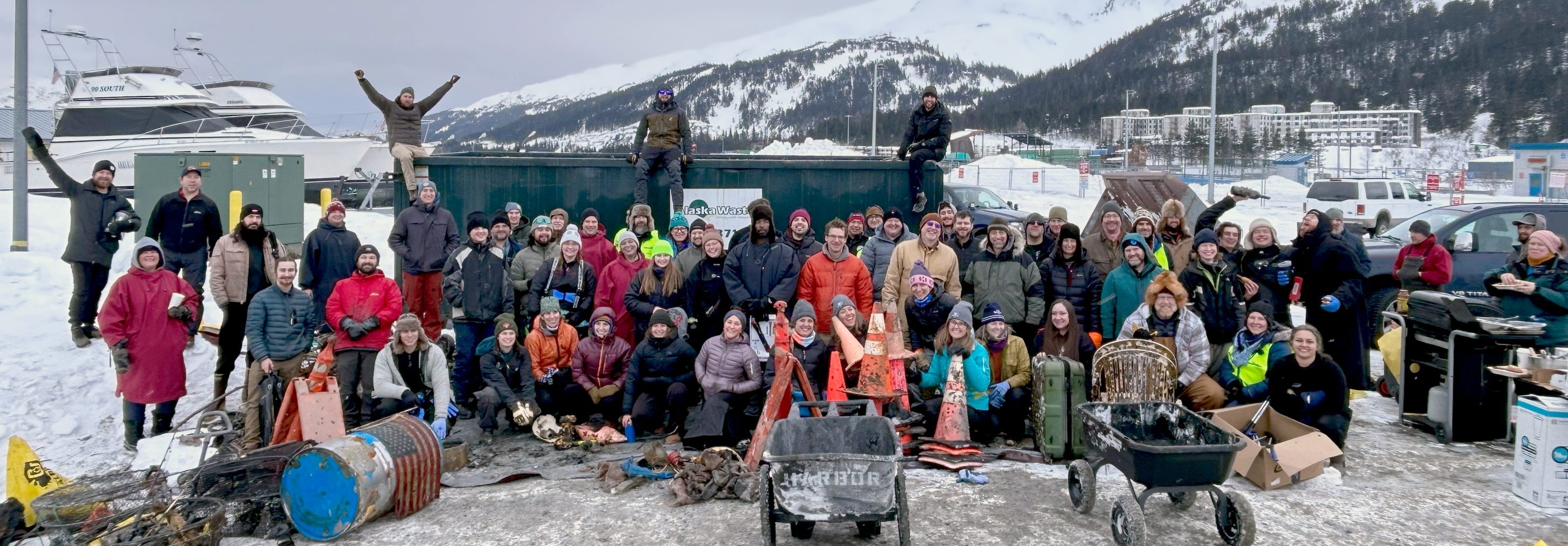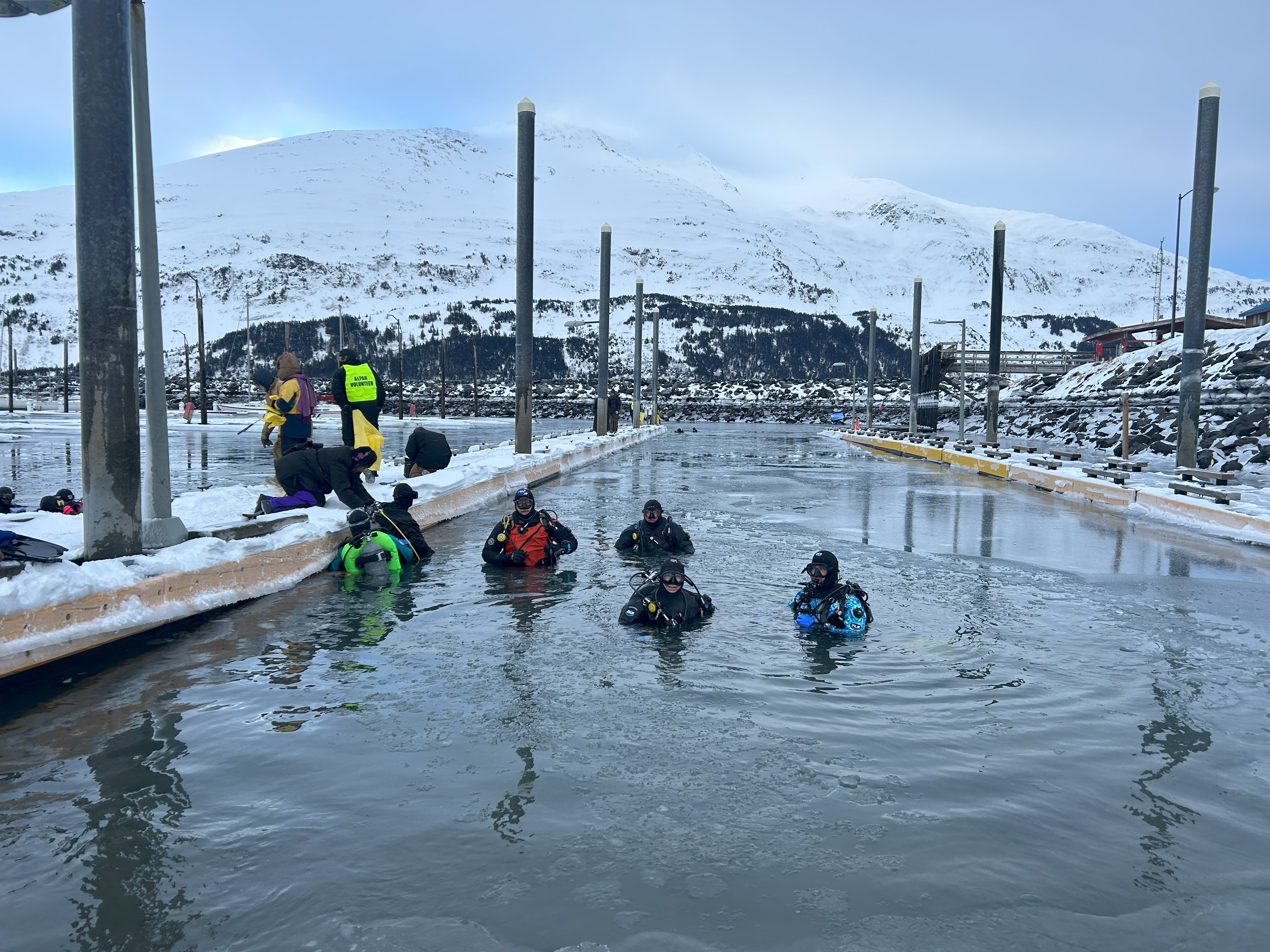
Caring for Alaska Dives Deep
Caring for Alaska Dives Deep

On a Saturday morning early last February, nearly 100 Alaskans traveled to Whittier and jumped in the water. They’re divers who volunteered to pick up the shocking array of junk people had dropped or thrown into the harbor. Anchorage dive shop Dive Alaska frequently organizes harbor clean-ups, which Matson’s Caring for Alaska program supports with donations of supplies, including carts, handgrabbers, and safety vests.
Dive Alaska is a for-profit small business that offers everything a person needs to dive in Alaska, renowned as one of the world’s great cold-water dive locations. Yet, more than anything, Dive Alaska is a collective of enthusiasts passionate about Alaska’s oceans.
They’re people who spend 30 hours on a boat smashing through 13-foot waves outside Kodiak to dive into a sunken wreck. Or brave near-zero ocean temperatures to haul up garbage in Whittier harbor, making it safe for enjoyment.

“We pulled out nearly 4,000 pounds of trash,” Dive Alaska Training Director Alex Fancher said. “Divers bring it up, lift it onto a dock where our land-based volunteers load it into carts, onto shore for sorting, and into a dumpster. So, the carts are a huge help.”
Dive Alaska estimates there were about 60 divers in the water locating and hauling out items, 30 people on shore hauling it off the docks, and 10 more people providing support, including cooking lunch and providing drinking water.
Dive Alaska awards prizes for the most interesting finds, which include everything from cell phones to a boat prop in good-as-new condition to an old automobile engine. The most important trash to recover is hazmat, such as marine batteries and electronics actively leaking into Prince William Sound. For a heavy item, the divers wrestle it into a lift bag, which is then inflated to rise to the surface. Several volunteers are on the dock, attaching lines and hauling them up.
“We didn’t remove many heavy things this year just because there is so much, so very likely we’ll go back to Whittier next year,” said Fancher. “This is a yearly thing for us, and we usually alternate harbors each year, but Whittier is so rough, we’ll probably go back again.”
Requests have flooded into Dive Alaska asking for harbor clean-ups everywhere from Kodiak to Cordova, Valdez, and Sitka. But the divers are in Anchorage or Mat-Su, so fulfilling those requests is a somewhat complex mix of volunteers who can travel, dealing with ship-restricted equipment, such as air tanks, and associated costs.
What item won the prize for the most exciting find? A corked (and still drinkable) bottle of $120 bottle of red wine.
